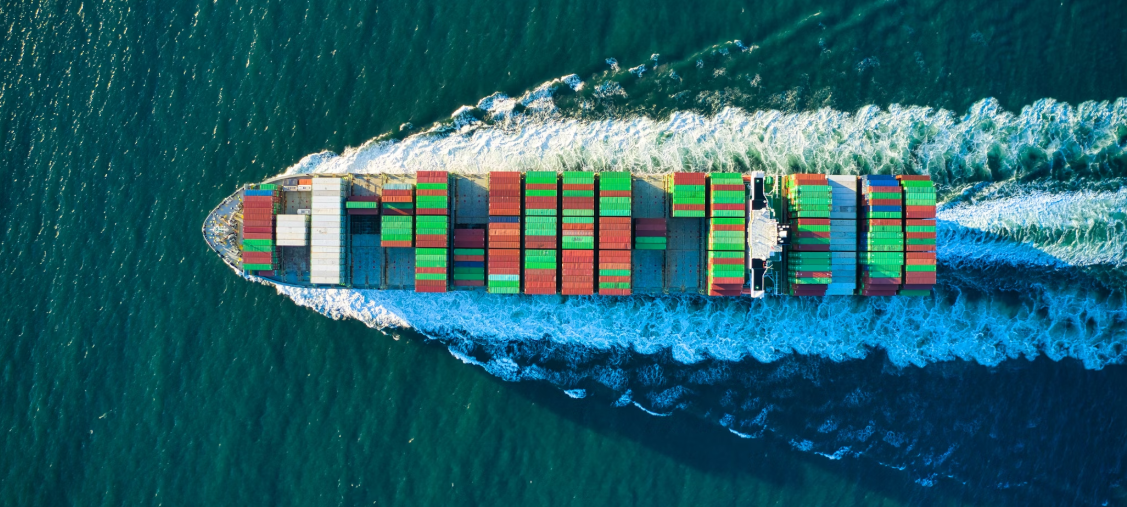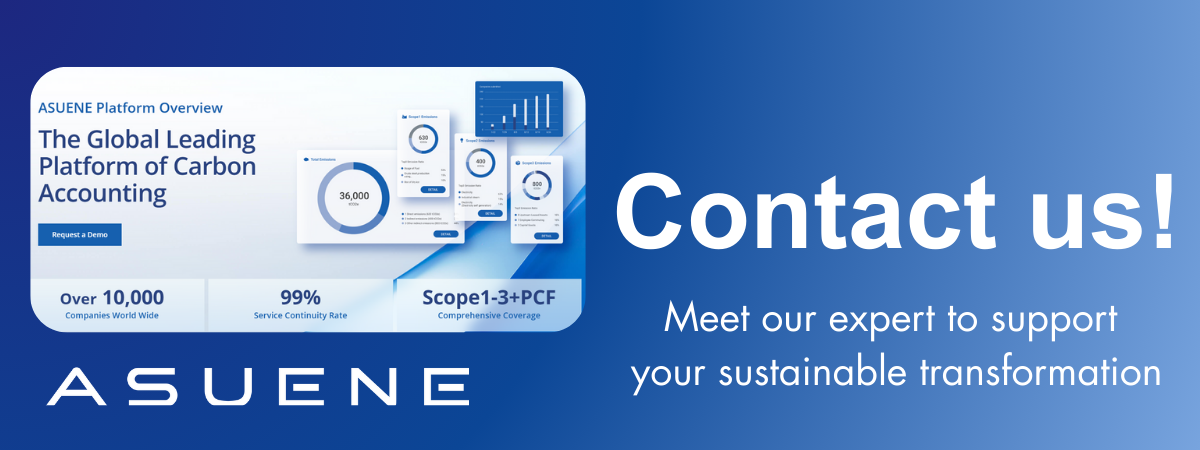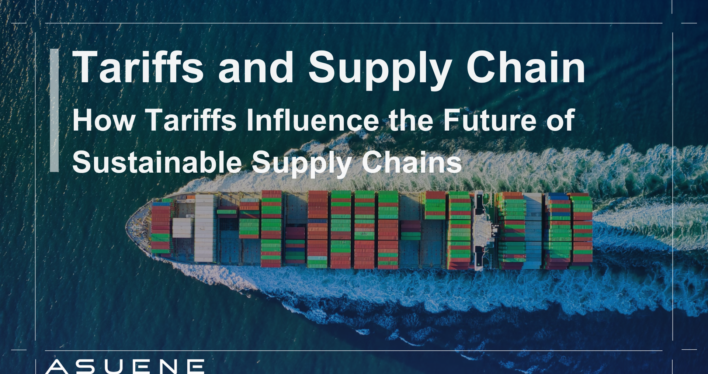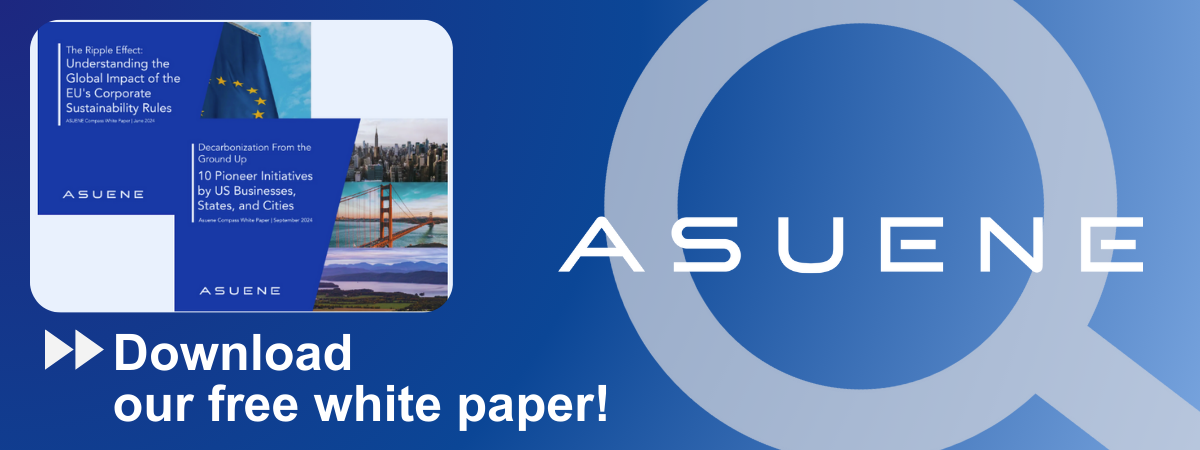- Article Summary
-
The Rising Impact of Tariffs on Global Procurement Strategy
In the era of global trade volatility, tariffs have emerged as one of the most powerful levers shaping sustainable supply chains. Governments use tariffs to influence trade balances, protect domestic industries, and encourage local manufacturing. However, these policies can create unintended ripple effects in supply chain sustainability efforts. Companies committed to reducing Scope 3 emissions—which originate in the value chain, including procurement, transportation, and logistics—often rely on intricate international supplier networks optimized for environmental performance and cost-efficiency.
When tariffs increase the cost of importing from specific countries, supply chains must adapt—often by reshuffling supplier networks, shifting sourcing regions, or increasing reliance on domestic suppliers. This reconfiguration may result in a loss of previously optimized sustainability gains. For example, a company sourcing solar panels from an environmentally certified supplier in Southeast Asia may shift to a local alternative due to tariff increases, even if the domestic supplier has a higher carbon footprint. Thus, tariffs indirectly interfere with emissions reduction strategies by forcing companies to compromise on environmental performance in favor of cost control.
| Tariff-Driven Supply Chain Shifts | Sustainability Trade-Off |
|---|---|
| Relocation to domestic suppliers | Potentially higher emissions |
| Supplier diversification | Reduced control over ESG data |
| Increase in local manufacturing | Energy mix varies by region |

Supplier Diversification and Emissions Complexity
One of the primary responses to tariffs is supplier diversification, often perceived as a risk-mitigation tactic. While diversifying suppliers across multiple geographies can buffer against trade disruptions, it introduces a significant challenge for emissions accounting and sustainability consistency. The lack of standardized sustainability reporting among smaller or new suppliers complicates Scope 3 emissions tracking and may hinder a company’s ability to report progress accurately under frameworks like the Science Based Targets initiative (SBTi).
Additionally, expanding the supplier base across different regulatory environments requires procurement teams to invest more resources into ESG due diligence. These new suppliers may not share the same environmental priorities or be equipped with technologies and processes aligned with decarbonization goals. As a result, even if the supply chain becomes more resilient, its sustainability profile might deteriorate unless robust governance and monitoring mechanisms are implemented.
“Supply chain resilience and sustainability must go hand in hand. But tariffs often tip the scale toward resilience at the cost of environmental integrity.” – Procurement Sustainability Officer, Global Manufacturing Firm
Domestic Manufacturing: Cleaner or Dirtier?
Tariffs frequently aim to bolster domestic manufacturing, which is often framed as a win for sustainability due to reduced transportation emissions. However, the environmental benefit is not always guaranteed. The carbon intensity of domestic production depends heavily on factors like energy mix (coal vs. renewables), production efficiency, and regulatory enforcement. For example, while local production eliminates overseas shipping, it might rely on fossil-fuel-heavy power grids or outdated technology, which could ultimately raise emissions per unit.
This paradox reveals that “local” doesn’t always equate to “low-emission.” Companies must evaluate domestic production through a holistic lens, comparing lifecycle emissions—including raw material sourcing, manufacturing emissions, and transportation—with their current international supply strategies. Only then can procurement decisions fully align with decarbonization goals.
| Scenario | Transportation Emissions | Manufacturing Emissions | Net Carbon Outcome |
|---|---|---|---|
| Overseas (Asia) | High | Low (solar-powered plants) | Neutral to Low |
| Domestic (US) | Low | High (coal-heavy grid) | High |
| Hybrid (Nearshore) | Moderate | Moderate | Optimized |
Table 2: Evaluating total emissions by manufacturing location.
Strategic Procurement Amid Policy Uncertainty
Procurement leaders face a dual challenge: adapt to volatile trade policies while advancing sustainability objectives. This requires rethinking procurement strategy beyond short-term cost metrics. A more strategic approach involves engaging suppliers in long-term partnerships focused on carbon transparency, embedding ESG clauses into contracts, and leveraging digital tools for real-time emissions tracking.
Furthermore, procurement teams must collaborate with government affairs and sustainability departments to anticipate policy shifts. Scenario planning and supply chain modeling help assess the impact of hypothetical tariffs on both cost and carbon metrics. Leading companies are now incorporating carbon pricing into their procurement frameworks to quantify sustainability risk more accurately.

The Path Forward: Balancing Trade, Cost, and Carbon
As tariffs continue to shape global commerce, sustainable supply chains must evolve with agility and foresight. Procurement is no longer a back-office function—it’s a strategic force in driving corporate climate action. The key lies in balancing cost considerations with environmental integrity, which often means investing in technology, supplier relationships, and cross-functional alignment.
In the coming years, organizations that excel at aligning trade compliance with emissions reduction will be better positioned to thrive in a carbon-conscious economy. Governments, too, have a role to play by designing trade policies that incentivize low-emission production rather than merely domestic manufacturing. Transparency, innovation, and collaboration will be vital as procurement teams lead the charge toward decarbonized supply chains, even in a tariff-constrained world.
| Key Recommendation | Actionable Step |
|---|---|
| Supplier transparency | Require emissions reporting in RFQs |
| Policy scenario planning | Use predictive modeling tools |
| Domestic vs. global emissions comparison | Conduct lifecycle carbon assessments |
| ESG integration in contracts | Mandate sustainability clauses |
Industry-Specific Impacts of Tariffs on Sustainable Supply Chains
Tariffs do not impact all industries equally—each sector faces unique trade-offs between cost, supply chain complexity, and environmental goals. For sustainability-focused procurement teams, understanding industry-specific vulnerabilities is essential for targeted decision-making. Let’s examine three major sectors: manufacturing, transportation & logistics, and construction.
Manufacturing
In manufacturing, tariffs often disrupt the flow of raw materials and subcomponents, many of which are sourced internationally. For example, automotive and electronics manufacturers rely heavily on specialized parts from Asia. Tariffs may compel them to reshore operations or find alternative suppliers, both of which can increase emissions due to less energy-efficient domestic production or longer transportation routes. Moreover, high-tech manufacturing requires tight quality and emissions controls, which may be harder to replicate with new suppliers.
Transportation & Logistics
This sector is caught between policy-induced operational changes and sustainability mandates. Tariffs may alter global shipping patterns, leading to more complex routes or fragmented shipments—raising fuel usage and emissions. For logistics firms, this presents both a risk and an opportunity: optimizing route planning, investing in electric fleets, or transitioning to rail freight can mitigate tariff effects while advancing green targets.
Construction
Construction is particularly vulnerable to tariffs on steel, aluminum, and machinery—many of which are imported for infrastructure and commercial projects. Tariffs can increase the cost of sustainable building materials, making it harder to adhere to LEED or other green certification standards. Additionally, shifting to local materials may increase the embodied carbon of structures if local production is carbon-intensive. Procurement teams in construction must reassess lifecycle emissions for each material choice under new tariff constraints.
| Industry | Tariff Effect | Sustainability Challenge | Recommended Response |
|---|---|---|---|
| Manufacturing | Disruption in parts/raw materials supply | Increased emissions from alternative or domestic sources | Invest in supplier ESG audits and carbon modeling |
| Transportation & Logistics | Route changes, fuel cost volatility | Higher emissions from longer routes or fragmented logistics | Transition to electric/rail logistics and route optimization |
| Construction | Increased cost of imported materials | Embodied carbon may rise with local sourcing | Perform carbon lifecycle analysis on all building inputs |
Why Work with ASUENE Inc.?
Asuene is a unique company that can provide end-to-end support for the CSRD (Corporate Sustainability Reporting Directive), encompassing GHG (Greenhouse Gas) emissions calculation, ESG data collection, reporting, consulting (Gap analysis, double materiality analysis), and third-party verification.
ASUENE USA Inc., a subsidiary of Asuene Inc., is a key player in carbon accounting, offering a comprehensive platform that measures, reduces, and reports emissions, including Scope 1-3, with expertise in decarbonization. Asuene serves over 10,000 clients worldwide, providing an all-in-one solution that integrates GHG accounting, ESG supply chain management, a Carbon Credit exchange platform, and third-party verification.
ASUENE supports companies in achieving net-zero goals through advanced technology, consulting services, and an extensive network.


